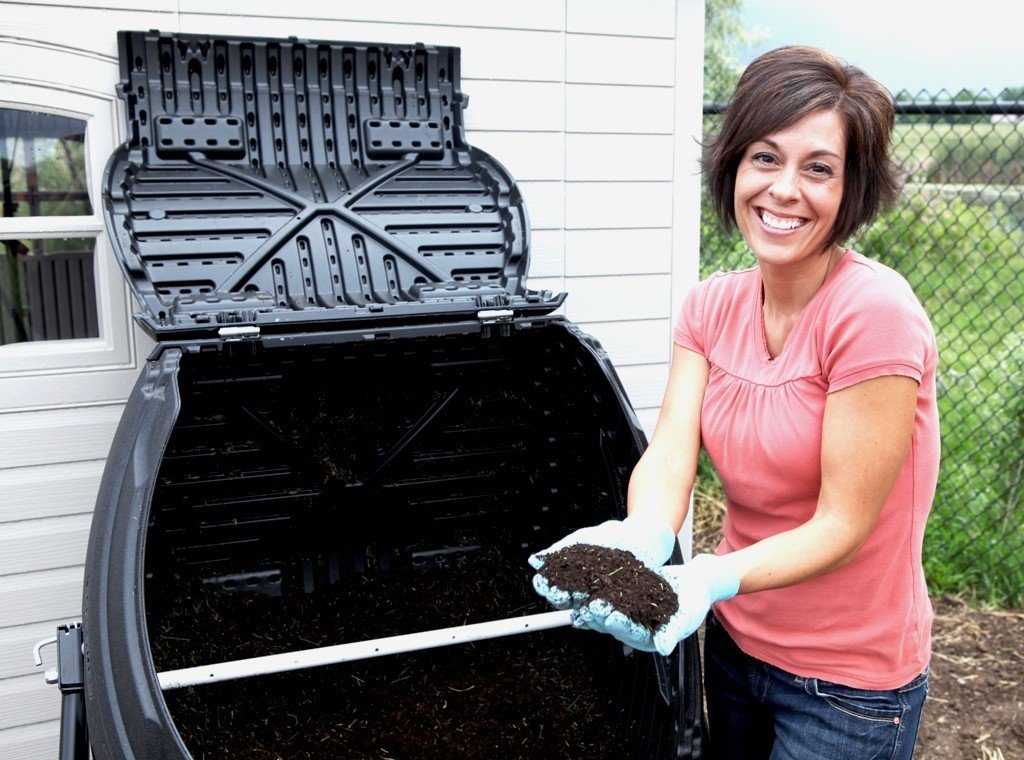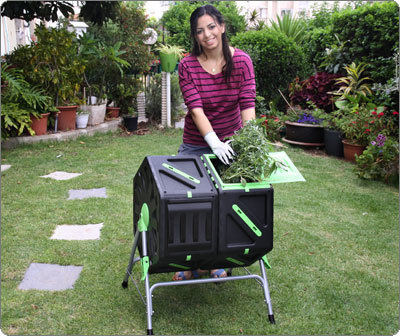Traditionally, composting can be a very time consuming process. You’d throw a batch of compost you’ve been saving up into your compost bin. Then every week or so you turn the pile and add extra water if needed. And eventually (typically 1-3 months) you’ll have finished compost that’s ready to be used throughout your garden.
I used to have 3 different compost bins going at the same time: one for collecting compost materials, one that’s in the process of being turned and watered, and one for finished compost.
Guess what? There’s a much, much easier way to do composting! It’s called a tumbling composter.
What is a tumbling composter?
As you probably guessed, it’s a composting barrel that “tumbles”. Here’s how it works:
- Add some compost (commonly fruit and vegetable scraps from your kitchen - be wary of composting these items) mixed with soil, horse manure or compost activator.
- Turn the barrel a minimum of twice a week to mix the contents.
- If you live in a drier climate or can tell that the compost mixture is too dry, add a few cups of water during the turning process.
- In 2-6 weeks (depends on many factors such as the amount of oxygen in the barrel, how small your pieces of compost are, the carbon / nitrogen ratio, and how much moisture there is) you should have some awesome, nutrient-rich compost, that the plants in your garden will love!
What are some of the pros of a compost tumbler?
- Due to their excellent ability to aerate and mix oxygen, they can usually create finished compost in weeks rather than months.
- They are typically more heavily constructed than compost bins, because they have to be able to support the full weight of the compost while being spun. This means they should last longer than bins.
- They’re easier to empty than compost bins, as you can roll a wheelbarrow directly under the drum.
- Since they’re completely sealed, smells are better contained, and your neighbors will thank you for that!
- It’s nearly impossible for pests such as raccoons and rodents to get into a tumbler. But with a bin, they are sometimes able to get into the base.
Are there any cons?
Although tumbling composters are fantastic and make composting a whole lot easier, there are a few drawbacks to consider:
- Tumblers are often more expensive than bins.
- Compost bins can hold a larger volume of compost, so if you have a larger garden and more time on your hands, they may be a better choice.
Where can I get one?
Our favorite type of tumbling composter is a dual-chamber, as it’s more efficient. You use one side for active composting, and the other side for finished compost to be used in your garden. That way you always have compost ready and available. Best4Garden has these on sale right now.
Alternatively, here’s a great single-chamber option. It’s easy to assemble, UV protected, and well-constructed for year-round composting.
What are your favorite composting tricks? Let us know in the comments below :)

